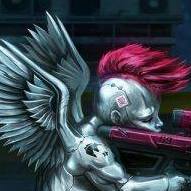nas Home NAS Help
1 hour ago, BDunkz said:Ok, so an:
intel pentilim
some itx mobo
8 or 16gb stick of ddr4
Fractal design node 304
2 wd red 4tb hdd
Usb for unraid
did I miss anything?
Dont forget a PSU ![]()
Just make sure with the CPU you stick with a G series Pentium or Celeron - they all have onboard graphics so you wont require a GPU.
You cant really go past the Intel G4560 for price to performance in the low tier, if you want to save another $20 though you could also just do a celeron like a G3930
Something like this:
PCPartPicker part list / Price breakdown by merchant
CPU: Intel - Pentium G4560 3.5GHz Dual-Core Processor ($66.99 @ SuperBiiz)
Motherboard: ASRock - H270M-ITX/ac Mini ITX LGA1151 Motherboard ($91.98 @ Newegg)
Memory: G.Skill - Aegis 8GB (1 x 8GB) DDR4-2133 Memory ($54.99 @ Newegg)
Storage: Western Digital - Red 4TB 3.5" 5400RPM Internal Hard Drive ($135.99 @ SuperBiiz)
Storage: Western Digital - Red 4TB 3.5" 5400RPM Internal Hard Drive ($135.99 @ SuperBiiz)
Case: Fractal Design - Node 304 Mini ITX Tower Case ($84.90 @ OutletPC)
Power Supply: SeaSonic - G 550W 80+ Gold Certified Semi-Modular ATX Power Supply ($69.39 @ SuperBiiz)
Total: $640.23
Prices include shipping, taxes, and discounts when available
Generated by PCPartPicker 2017-06-11 04:50 EDT-0400
You might also be interested in some other more NAS oriented case options (if your budget allows for any of these):
Silverstone DS380B has 8 hotswap bays
iStarUSA S-35-DE5 has 5 hotswap bays
Norcotek ITX-S4 has 4 hotswap bays
Norcotek ITX-S8 has 8 hotswap bays
iStarUSA S917 has 7 5.25" bays (You can install 2 x hotswap bays such as this)
iStarUSA S915 with 5 x 5.25" bays (As above but less bays)
















Create an account or sign in to comment
You need to be a member in order to leave a comment
Create an account
Sign up for a new account in our community. It's easy!
Register a new accountSign in
Already have an account? Sign in here.
Sign In Now